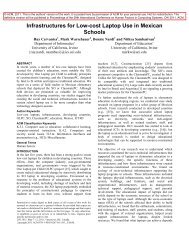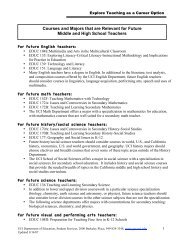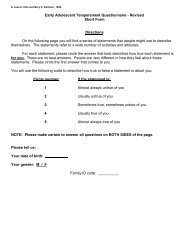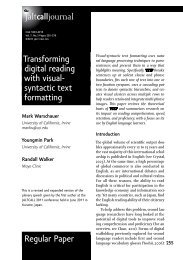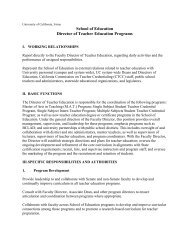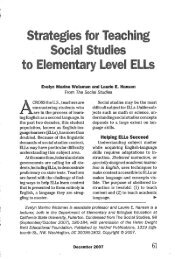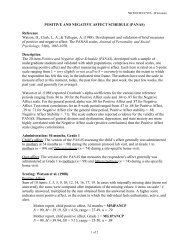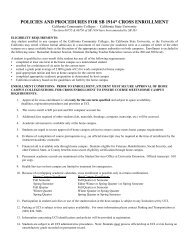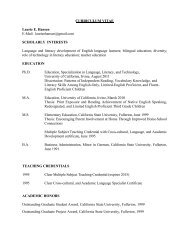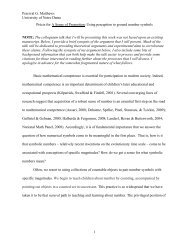NETWORK-BASED LANGUAGE TEACHING
NETWORK-BASED LANGUAGE TEACHING
NETWORK-BASED LANGUAGE TEACHING
You also want an ePaper? Increase the reach of your titles
YUMPU automatically turns print PDFs into web optimized ePapers that Google loves.
284 R. KERN, P. WARE AND M. WARSCHAUERevidence that the intermediate-level Spanish learners in the synchronouschat group outperformed the face-to-face control group on a pretest/posttestoral proficiency measure. In another quasi-experimentalstudy, Abrams (2003) considers language in a third-semester Germancourse. Although the students in the synchronous group producedhigher quantities of output in subsequent face-to-face discussions thantheir counterparts in either the asynchronous or control groups, shefound no statistically significant differences in terms of lexical richnessand diversity or syntactic complexity.To summarize, much of the research grounded in SLA theory and incross-modality transfer builds off the premise that language itselfremains a relatively stable target, and the overarching goals, outcomes,and processes of language learning are generally considered similarwhether conducted in physical or virtual space. Research is aimed atdetermining whether and to what extent technology-mediated interactioncan support language acquisition at least as well as face-to-faceinteraction.Sociocognitive and Sociocultural ApproachesResearchers who question the assumed stability and neutrality oflinguistic forms and functions in virtual discourse have turned theirfocus to two main areas: genre differentiation and culture learning innetworked classrooms.Genre differentiation. Online communication is not a single uniformgenre, but rather a range of genres generated situationally for differentmedia (e.g., blogs, e-mail, instant messaging, wikis, online forums,MOOs, chat groups) and according to the particular needs and purposesof participants. For example, synchronous online language is typicallycharacterized by the fragmentary nature of conversation flow, themultiplicity of discussion threads, the difficulty of back channeling toclarify one’s message, the lack of paralinguistic and contextual cues,and the tendency to emphasize phatic communication. Asynchronousmodes such as threaded discussion, however, tend to be less fragmentary,more informationally dense and complete, and focused on a singlediscussion topic. Variability in both technology and purpose leads to arange of online language that can resemble hybrid forms of standardand nonstandard language. Herring (2001) maintains that the fragmented,nonstandard language found in some online interactions isnot the result of errors, but rather the result of deliberate choices by usersto save typing time or to be creative with language. Warner’s (2004)work on language play corroborates this view by showing how learnersof German created hybrid language forms with code-mixing in their



